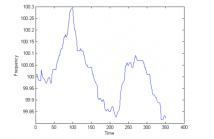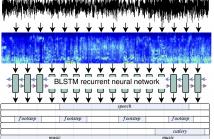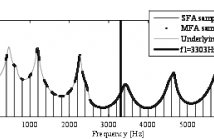- Transducers
- Spatial and Multichannel Audio
- Source Separation and Signal Enhancement
- Room Acoustics and Acoustic System Modeling
- Network Audio
- Audio for Multimedia
- Audio Processing Systems
- Audio Coding
- Audio Analysis and Synthesis
- Active Noise Control
- Auditory Modeling and Hearing Aids
- Bioacoustics and Medical Acoustics
- Music Signal Processing
- Loudspeaker and Microphone Array Signal Processing
- Echo Cancellation
- Content-Based Audio Processing

- Read more about Finding Audio Geography using ENF
- Log in to post comments
Electric Network Frequency(ENF) is a recently developed technique for the authentication of audio signals. ENF gets embedded in audio signals due to electromagnetic interferences from power lines and hence can be used as a measure to find the geographical location and time of recording. Given an audio signal, this paper presents a technique of finding the power grid the audio belongs to. Towards this, we first extract the ENF sinusoid using a very narrow bandwidth filter centered around the nominal frequency. The filter is designed using a frequency response masking approach.
Report.pdf
- Categories:
 239 Views
239 Views- Read more about Exploring Power Signatures for Location Forensics of Media Recordings;SP Cup 2016 Project Report by team "The Zenith"
- Log in to post comments
This report presents the results to the challenge of
”Exploring Power Signatures for Location Forensics of Media
Recordings” as apart of Signal Processing Cup 2016 by IEEE
Signal Processing Society. Here we examine different frequency
estimation and classification techniques to provide accurate ENF
estimates and classify these signals into the corresponding grid
of recording. In this report we propose methods of efficient
extraction of ENF signal using quadratic interpolation and
frequency tracking.The SVM and GMM classifiers used provided
sp_cup4.pdf
- Categories:
 92 Views
92 Views- Read more about Report from UWEngineers for SigCup
- Log in to post comments
Electrical network frequency (ENF) has been used as evidence for location forensic. To determine location, we need accurate ENF information from noisy media files, select features of the ENF signal and the classify it based on previous knowledge of different grids.
UWEngineer.pdf
- Categories:
 20 Views
20 Views- Read more about Linearly Augmented Deep Neural Network
- Log in to post comments
Deep neural networks (DNN) are a powerful tool for many large vocabulary continuous speech recognition (LVCSR) tasks. Training a very deep network is a challenging problem and pre-training techniques are needed in order to achieve the best results. In this paper, we propose a new type of network architecture, Linear Augmented Deep Neural Network (LA-DNN). This type of network augments each non-linear layer with a linear connection from layer input to layer output.
- Categories:
 11 Views
11 Views
- Read more about Recurrent neural networks for polyphonic sound event detection in real life recordings
- Log in to post comments
Slides from the presentation held at ICASSP 2016 for the paper: Recurrent neural networks for polyphonic sound event detection in real life recordings
- Categories:
 28 Views
28 Views- Read more about Hardware Implementation of FIR/IIR Digital Filters Using Integral Stochastic Computation
- Log in to post comments
- Categories:
 22 Views
22 Views- Read more about INVESTIGATION OF SPEAKER EMBEDDINGS FOR CROSS-SHOW SPEAKER DIARIZATION
- Log in to post comments
- Categories:
 3 Views
3 Views- Read more about Fast variational Bayesian signal recovery in the presence of Poisson-Gaussian Noise
- Log in to post comments
This paper presents a new method for solving linear inverse problems where the observations are corrupted with a mixed Poisson-Gaussian noise.
slides.pdf
- Categories:
 29 Views
29 Views
- Read more about Simple Multi Frame Analysis Methods for Estimation of Amplitude Spectral Envelope in Singing Voice
- Log in to post comments
In the state of the art, a single frame of DFT transform is commonly used as a basis for building amplitude spectral envelopes.
Multiple Frame Analysis (MFA) has already been suggested for envelope estimation, but often with excessive complexity.
In this paper, two MFA-based methods are presented: one simplifying an existing Least Square (LS) solution, and another one based on a simple linear interpolation.
- Categories:
 28 Views
28 Views